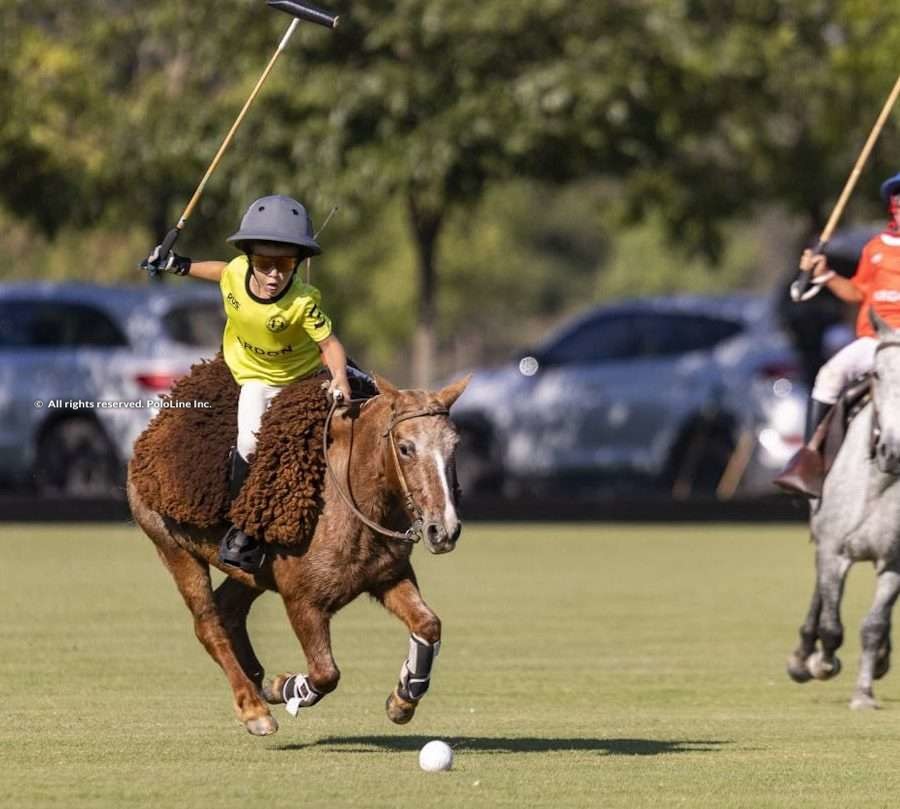By Prof. Eduardo Amaya, with the collaboration of Raúl Laplacette
Technique is the set of actions or maneuvers aimed at a specific and effective result.
Over the years, it has been proven that in polo, more than in other sports, one learns by observing and imitating. This learning by imitation begins in our childhood and occurs unconsciously. Humans have a great ability to learn simply by observing and imitating. In the specific case of polo, the focus is on those players who are role models for each individual, imitating their riding, their hitting; in a word, their style.
However, if we delve into the theory of observational learning, we can detect that more complex and certainly more valuable elements are involved than mere imitation. Knowing how these elements operate, we can benefit from all their richness. I am referring to the knowledge of technique. Technique is the answer, in this case, to why there are successes and
errors.
Today, with the benefits of technology, serial photographs, videos, recordings, simulators, among others, the technique can be evidenced and observed by those who, with great commitment, effort, and dedication, decide to try to improve.
The act of imitating does not make us aware of what we are really doing and why we are doing it; that is, the reason for that particular action. Thus, by imitating and doing something very well, success can be achieved; this is the case with the best players, but a large majority, for some reason, do not imitate well, and the questions are: How do they realize their mistakes?
How can they avoid them?
Sports such as golf and tennis, to name two among many, have their technique, and those who start practicing pay attention to it. Polo, due to its complexity, being a sport on horseback, requires the study of appropriate technique. This appropriate technique originates and has
originated precisely in all those who were and are the best players; logically, everything has a why, and from there, this technique starts, which makes everything efficient and easier.
There are countless examples of correct actions both while riding (equitation) and hitting the ball (swing), performed by the best players, I insist, without knowing the technique and its why.
The pre-contact, a phase of the swing, during each stroke, is a clear example. This occurs during the downward phase of the mallet towards the ball (energetic phase). The arm aligns with the ball, but not the hand holding the mallet, which, coming at 90 degrees and in supination, delays
and produces the whip effect (supipronation).
Another example, during the holding or checking of the horse, good players do it with both hands and the mallet in a low position without knowing, on numerous occasions, the reasons.
In the specific case of this action, the right hand takes the reins from below in front of the left hand, which takes both. Many players, not knowing these reasons, take only one rein from below, usually the right one, which is easier (bad imitation), and they hold it, twisting the horse’s head to the right.
– Calibrating the distance, that is, hand-ball with the flexion of the knee and to a lesser extent the hip on the hitting side. This is something that every good player does without realizing it, being an unconscious act, therefore not taking it into account.
– The way to place one or both feet in the stirrups correctly or incorrectly.
– Flexing the ankle outward favors contact and grip with the knees.
– Sometimes, by placing the left hand, with the reins taken, on the horse’s
withers, more balance is achieved on the hitting platform.
– Knowing the reasons for natural and artificial aids.
– Knowing the biomechanics of the horse’s stop to collaborate with it.
– The work of the pelvis and hip during horse management.
– Reasons for posting.
-What the half-seat position or golden triangle gives us.
– The role of the fingers in the long and short hit (taps).
– The role of the balancing leg.
– Reasons for the pre-swing and many more examples.
During practice, one should pay attention to the technique until muscle memory is established; from then on, it will be done unconsciously. It is necessary to understand that technique, practice it, establish it, and make it natural.
As professional instructors, we have the obligation to teach applying the technique in each case, so that the learner feels secure and guided on the best path to take.

